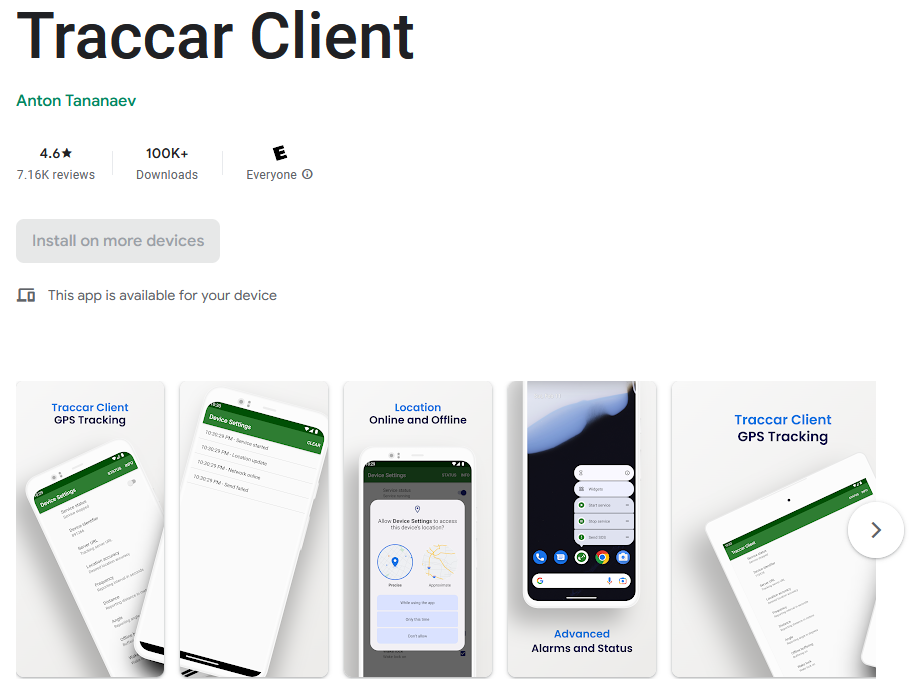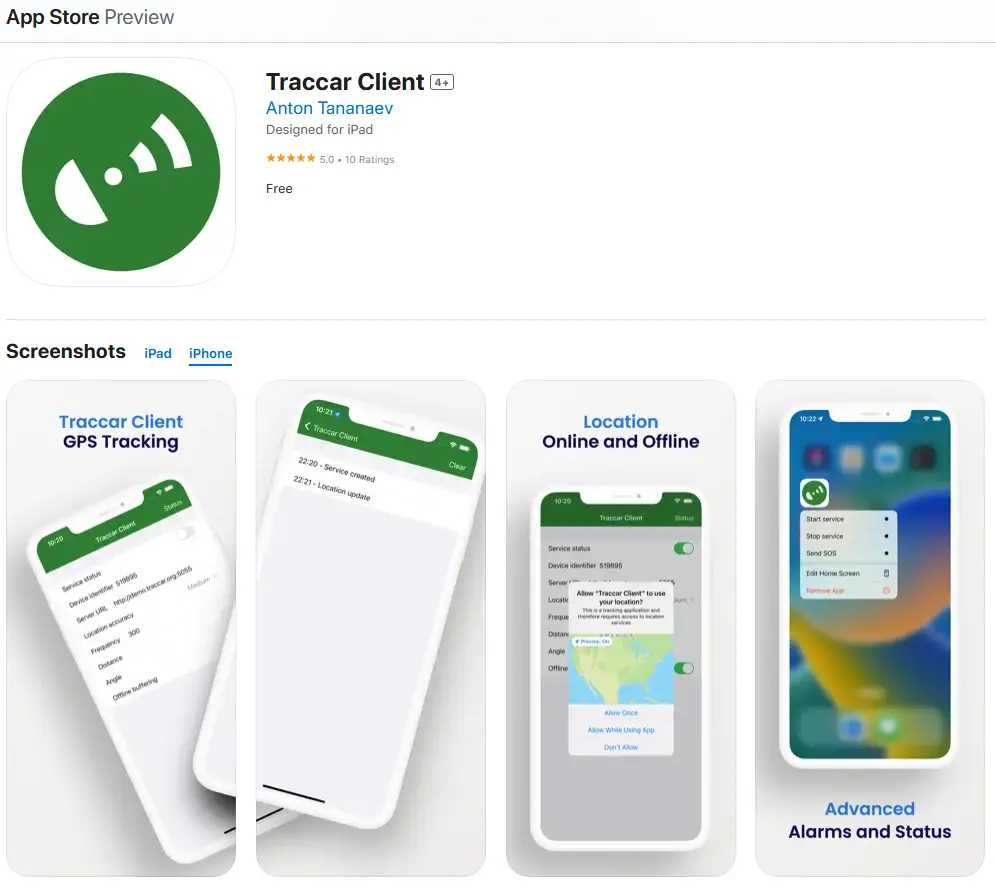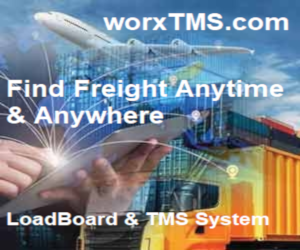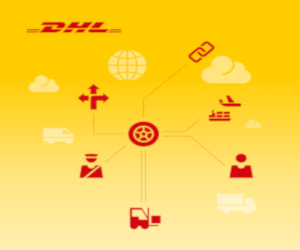Hello World

Less than Truckload (LTL) vs. Full Truckload (FTL) freight: What's the difference?
Deciding between the less than truckload (LTL) shipping and full truckload (FTL) methods is often a hard choice when you aren’t sure of your options. A lot of factors weigh into freight shipping. Assessment of each element can steer you toward the most efficient method based on your particular needs. Factors like freight dimensions (made up of length, width and height), freight classification and special services are all things to consider when choosing a shipping method.
We've outlined some of the fundamental differences between less than truckload (LTL) shipping and full truckload (FTL) freight so shippers can book with confidence.
What are less than truckload (LTL) and full truckload (FTL)?
The transport of freight that does not require the entire space of a truck is also known as less than truckload (LTL) shipping, whereas full truckload (FTL) shipments take up the space or weight limit of an entire trailer. Depending on your specific freight requirements, one option is likely better suited than the other.
A closer look at less than truckload (LTL) shipping.
Less than truckload (LTL) shipping allows multiple shippers to share space on the same truck. It is cost efficient, with multiple companies paying for their portion of trailer space.
To protect items while in transit, it is essential to consolidate goods into large, crated or palletized packages. Prepare the shipment to endure handling during transfer to multiple trailers before it arrives at the consignee or destination.
A closer look at full truckload (FTL) shipping.
If less than truckload shipping doesn’t meet your needs, then full truckload shipping might be for you. Shippers use full truckload (FTL) when:
- There are enough items to fill an entire truck.
- The customer prefers a whole truck dedicated to their goods.
- The freight is time sensitive.
- The weight makes it more cost effective than less than truckload.
With full truckload (FTL), shipments typically travel on only one truck with one destination, so delivery time estimates are often accurate and fast in comparison to less than truckload (LTL) shipping.
The chance of possible damage to items during transit also decreases since there is less handling of the freight at multiple stops.
1. Increased Freight Handling. With FTL, a product ships straight to its destination and the seal remains unbroken on the trailer (unless it's a cross-border move). A single driver is usually responsible for both pickup and delivery.
With LTL, the goods likely load and unload across multiple trailers and terminals throughout the journey. This increased handling can escalate the likelihood of potential product damage, though LTL shipments will still arrive in good condition if proper packaging techniques are leveraged.
2. Freight Class Variation. Carriers moving an FTL shipment typically aren't as concerned with the exact commodity specifications. Product specifications—palletized, hazmat, or oversized—generally offer enough information to provide accurate pricing.
LTL rates often vary more significantly, even if the mixed commodities move in the same lane with the same number of pallets. All LTL carriers use the National Motor Freight Traffic Association's freight classification system to categorize commodities by attempting to account for their density, value, handling characteristics, and stowability.
3. Incremental Accessorial Charges. Since FTL drivers stay with a load from pickup through delivery, they are closer to the process and limit accessorial charges. FTL drivers are likely to worry less about taking a 15-minute driver assist or detention during a multiple-day transit.
With LTL, delays or unexpected consignee demands often result in charges since these carriers need to be paid for services rendered. Additionally, the provider needs to stay moving to stay profitable. In these cases, remember the total potential cost savings with LTL versus FTL. With LTL, it is also vital to understand the requirements at delivery to improve front-end quoting accuracy.
4. First-Come, First-Serve Pickup. While FTL drivers schedule a firm appointment time, LTL drivers require more flexibility since they pick up multiple shipments daily. Delays can occur and compound, which impacts delivery windows. Typically, LTL pickup times aren't guaranteed, with two-hour (or more) FCFS windows being the industry standard.
5. Reweighing/Reclassifying Products for Accuracy. With FTL, product inspection doesn't occur until the load gets to the receiver. The exception is an FTL driver stopping at weigh stations to verify the truck is under the 80,000-pound legal limit. With LTL, the origin terminal reinspects the load, and each order is likely reweighed by a forklift or floor scale to ensure accuracy.
Based on commodity profile, the freight might go through a dimensioner, which automatically scans it to determine weight and dimensions. If the dimensioner detects the product's specifications don't match the bill of lading, then the carrier reclassifies the freight, which could affect the rate.
6. Uninterrupted Transit. FTL transit can be predictable if the driver makes a timely pickup and goes straight through to the receiver. Total mileage, hours of service, posted speed limit, and estimated traffic determine arrival time.
Loads moved via LTL, however, seldom follow direct routes and will likely take longer than FTL. Unless a shipper pays a premium to guarantee the quoted transit, delivery dates are estimates.
7. Differing Trailer Specs. FTL carriers typically drive 53-foot trailers with swing doors that are 102 inches wide and have clearance heights of 110 inches. LTL carriers' trailers maintain the same specifications, except for roll doors in place of swing doors. This lowers the clearance height to 100 inches, slightly reducing their overall capacity
Final thoughts.
While there are pros and cons to each method, one option will prove to better suit your needs depending on your freight. When determining whether less than truckload (LTL) shipping or full truckload (FTL) is best for your shipping requirements
Our Speciality is Accounting Systems for Small Companies & Especially Transport Related Companies and our popular web based FrontAccounting is a simple, but powerful, system for the entire ERP chain and covers:
|
|
|
|
Features of Our Online Accounting Software for Transport Companies:
Sales And Accounts Receivables
 Open Customer Accounts and Customer Branches
Open Customer Accounts and Customer Branches
- Make Sales Areas, Sales Types, Sales Groups, Salesman Groups
- Make Sales Groups for grouping Customer Branches
- Prepare Sales Quotations (with inquiry and creating of Sales Orders)
- Prepare Sales Orders and Goods Delivery Notes
- Prepare Customer Invoices and Credit Notes
- Make Batch Invoicing for more than one delivery order.
- All of the Sales documents are completely editable and printable
- Point of Sales Definitions for Better Handling of Cash Sales
- Customer Payments and Allocations
- Company Logos can be attached to Sales Documents
- Dimensions can be Selected for Sales Delivery and Invoices
- Shipping Costs and Legal Text can be Added to Invoices
Purchases and Accounts Payable
- Open Supplier Accounts

- Make Purchase Orders, Goods Receival Notes and Payment Terms
- Clearing of Goods Receival Notes
- Entry of Supplier Price Lists & Related Conversion Factor into Purchase Prices
- Prepare Debit Notes and record Credit Notes from Suppliers
- Supplier Payments and Allocations
- Company Logos can be Attached on Documents
- Dimensions can be Selected for Purchase Orders and Purchase Invoices
- Option of Attaching Scanned Documents with Transactions
Inventory and Stocks
- Record Stock Items
- Define Item Categories and Item Locations

- Record location Transfers and other Adjustments
- Set Re-Order Levels for Inventory Items
- Automatic Calculation of Average Material Cost (per unit)
- Application of Standard and Overhead Costs, into material prices
- Quantity of Items can be Measured into Standard Units
- Foreign Codes Registration for Barcode Scanner Entry
Manufacturing
- Prepare Bills of Materials, Work Center Inquiries and Work Order Entries
- Feasibility of Adding Advanced Production and Simple Assembling Features
Fixed Assets
- Fixed Assets Purchase

- Fixed Assets Location Transfers
- Fixed Assets Disposal
- Fixed Assets Sales
- Fixed Assets Movements
- Fixed Assets Inquiry
- Process Depreciations
- Locations, Categories and Classes
Dimensions
- Two level of Dimensions are possible. You setup this in Company Setup.
- Two levels could be: Departments, Cost Centres.
- One level could be Cost Centre or Project.
Cash and Bank
- Open Bank and Petty Cash Accounts
- Record payments, deposit and withdrawals in related accounts
- Various currencies can be added and foreign currency translation is also done
- Record bank enquiries and reports
- Prepare bank accounts reconciliation
- Transactions can be made void and reprinted
General Ledger
- Open general ledger accounts, account classes and groups
- Record journal entries and budget entries
- Generate ledger accounts detailed enquiries with drill down reports
- Make journal enquiries with an option to view journal entries
- Closes the fiscal year and brings forward retained earnings
- Record depriciation entries on period based
- Make journal entries with corresponding entry in supplier / customer account
- Filter General Ledger reports by dimensions
- Quick entries (preset GL transactions) in bank deposit/payment, journal entry and supplier invoice/credit
Reports
- Print, Email and Convert into PDF; all the reports

- Export the reports in MS Excel/Open Office Calc format
- Generate reports on periodic and financial years basis
- Email documents directly to customers
- Make graphical analysis (Horizontal/Vertical Bars, Dot Lines, Pies and Donuts)
- Tag and save report selections
Access Levels and adaptations
- Different companies can be set-up simultaneously
- Separate financial years can be created and closed against entries
- Multi user access with different privileges
- Make backups and restore for companies
- Date Picker with week numbers for all date fields
- Simple Audit Trails
- Extensions for customizing menu tabs and applications
Advanced Features
Multi-Currency Support
- Historical Currency Rates
- Multi-Currency Bank Accounts, Customers And Suppliers
Advanced GST/VAT handling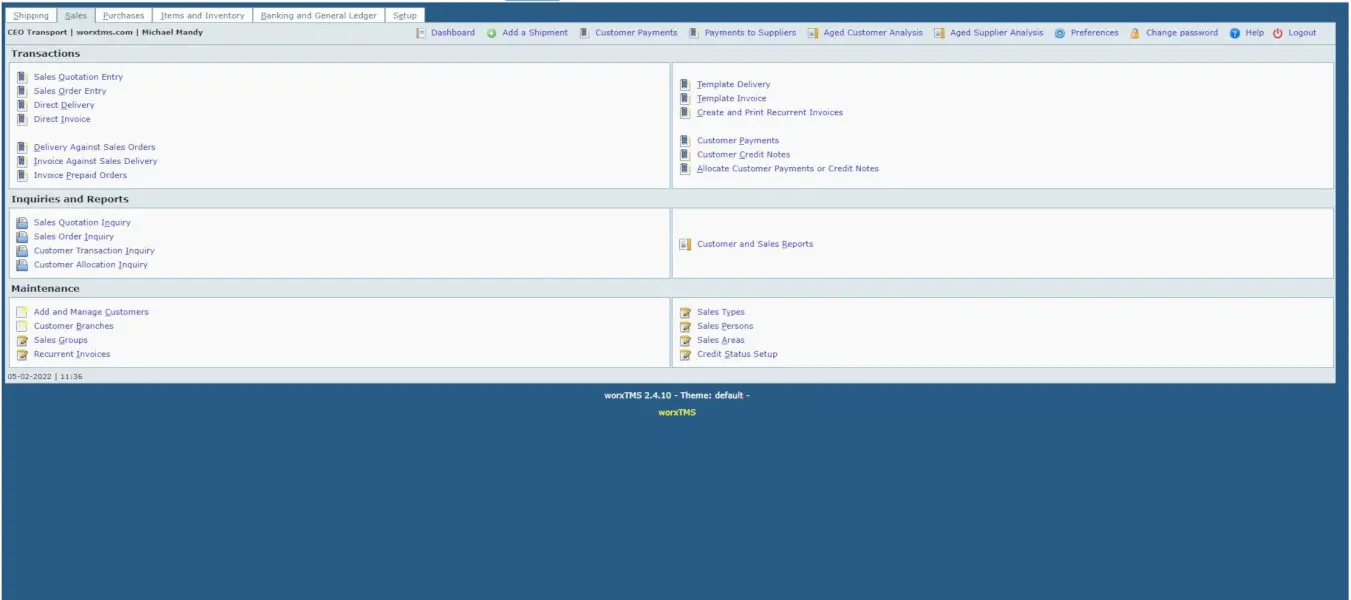
- GST/VAT can be Selected on Customer, Supplier and Item / Service Basis
- Advanced GST/VAT Report for Details and Outputs/Inputs
Language Support
- Full Support for Localization by the GNU's gettext package
- Multi Language Support with Right to Left Support in Arabic language
- Different Chart of Accounts can be Installed and Activated
- Jalali and Islamic Calendars are Supported
Other Details
- Every Document can be Emailed and Printed Simultaneously
- PDF can be Formatted for Every Document
- Projects, Cost Centers, Departments can be Added, using Dimensions
We Built worxTMS Around the Accounting Software, Not All the Above Features are Used in Transport but They are there if You Need to Use them! worxTMS as Mentioned Before is NOT Only for Transport Companies but is Also Available to Any Company Needing an Online Accounting Software System!
Benefits of Freight Management Software with Integrated Accounting System for Trucking Company
There are lots of aspects that go into running a successful trucking business, but a key one is accounting. From invoicing clients to paying employees, accounting is vital to any company. The worxTMS Freight Management Software includes an accounting system that was specifically developed to meet the needs of trucking companies and is fully integrated as part of our software. Using freight management software with an integrated accounting system provides a number of advantages for trucking companies. These are some of the biggest benefits!
Increased Time Savings
There is a lot that goes into running a trucking business, and the most successful companies are the ones that maximize efficiency. Having your accounting system integrated into your freight management software will save you time by eliminating the need for double data entry, automatically providing employees with notifications about unpaid orders, and having everything on one platform.
Improved Customer Service
Freight management software with integrated accounting will not only save your company time, but it will also improve efficiency. This in turn will result in better customer service for your clients. Invoicing can be automatic, payments can be reflected in multiple currencies, and employees have the ability to access this data from anywhere allowing them to easily answer clients’ questions no matter where they are.
Targeted Needs
Accounting is a need that every industry has, but there are specific tasks and details that are unique to the trucking industry. worxTMS’s integrated accounting system allows trucking businesses to easily manage drivers, owners, and carriers’ payroll (coming soon). It also makes it simple to invoice clients and receive payments for orders. We even include multiple currencies so that cross-border trucking companies can use whichever currency is relevant. All of the accounting needs and features a trucking company could need are included in worxTMS!
Start Benefiting with worxTMS.com
worxTMS is designed with integrated trucking accounting software capabilities that will provide you with all of these benefits and more. Watch your company thrive once you sign up!
worxTMS was built to meet the needs of trucking companies and that includes accounting. Our software is designed with integrated accounting capabilities that will provide you with all of these benefits and more.
Sign up for worxTMS today and start experiencing the advantages of using integrated trucking accounting software!

Understanding Freight Shipping Terms and Definitions
Like many industries, logistics has a number of terms with specialized meanings. To help our customers and website visitors, we’ve compiled this handy list. If we missed an important phrase or term, be sure and let us know. Use the simple form in the right hand column to suggest an addition. We appreciate that and we know our readers will too.
Accessorial Charges
Accessorial charges are for services that are in addition to typical transportation services such as: inside delivery, a residential delivery, liftgate delivery, and other similar services.
Air Bill (Air Waybill)
An Air Bill (Air Waybill) is the document for an air carrier that provides information about the freight, weight, freight charges, shipper, consignee, and the party responsible for freight charges. An air bill is essentially an LTL freight bill, but for an air carrier.
Arrival Notice
An arrival notice is the notice that the consignee receives when their freight has arrived at its destination. See also Delivery Receipt
Astray Freight
Astray freight is freight that is separate from the waybill, but has markings that indicate freight origin and destination.
Bill of Lading
The Bill of Lading (BOL) is the contract between the shipper and the carrier. This transportation contract identifies the freight, consignee, shipper, and the terms of the agreement.
Bonded Warehouse
A bonded warehouse is a warehouse that is approved by the Treasury Department. These warehouses are used for storing goods under bond until duties are paid.
Break Bulk
Breaking bulk consists of breaking down a load from one shipper that is being sent to multiple consignees.
Break Bulk Point
A break bulk point is the terminal or location that break bulk takes place.
C.O.D. (Cash On Delivery)
C.O.D. is a request to the carrier from the shipper. This request is for the carrier to pick up a check upon delivery that is payment for the goods being delivered. A C.O.D. request will be stated on the bill of lading and will state accepted forms of payment (company check or cashier’s check).
Carrier
A carrier can be an individual, partnership, or corporation that is in the business of transporting goods.
Cartage
Cartage consists of hauling freight between locations in the same town, city, or continuous municipalities.
Claim
A claim is filed to request payment from a carrier due to loss or damage alleged to have occurred while they possessed the shipment. A claim is filed to request a carrier for refund of an overcharge. See Overcharge.
Classification
Classification is used to assign rates to shipments. They are based on density, size, and value of the freight. The NMFC board has created a guide that is universally accepted by all major LTL freight carriers. Correct classification is crucial to receiving accurate freight quotes.
Collect Terms
Collect terms state that the consignee is responsible for the freight charges.
Concealed Damage
Concealed damage consists of damage to the contents of a package without the damage being apparent externally.
Consignee
The consignee is the individual or business that receives the freight being shipped.
Consignor
The consignor is the person or business that originates the shipment. Also, known as the shipper.
Container
A container is anything that items are packed in.
Contract
A contract is a legal document between parties. In regards to freight, a contract states specifics of the freight shipment process.
Corrected Bill of Lading (CBL)
A corrected bill of lading (CBL) is a documented that the shipper would issue to amend the original bill of lading (BOL).
Credit Application
A credit application is used to verify customer information in regards to credit worthiness.
Dedicated Charge
A dedicated charge is when a company commits specific equipment to a customer for their use only. Dedicated charges can include runs or deliveries outside of the typical system.
Deficit Weight
Deficit weight is weight added to a bill so that the shipment will cost less due to the rate reduction for higher weights.
Delivery Receipt (DR)
A delivery receipt (DR) is a document that is used when a shipment is delivered. The consignee signs this document to confirm delivery, and is also known as a Proof of Delivery.
Demurrage
Demurrage is the detention of a container or freight vehicle beyond the estimated time-frame.
Density (DPCF)
Density is the measurement of the volume of a shipment. The calculation for density is equal to the weight of the product divided by (length x width x height / 1728). Density is measured in pounds/cubic foot. DPCF Equals [Weight/(LXWXH/1728)]
Detention
Detention is the time that a driver is made to wait before loading/unloading at a customer’s facility. This time may cause an increase in cost for the shipment.
Direct Point
A direct point is a zip code that receives service by the contracted carriers own equipment and driver. See also Indirect Point.
Dispatching
Dispatching is the process of scheduling and managing intra-city traffic (line haul) and intercity pickup and delivery (P&D).
Diversion
A diversion is a route change made to a shipment in transit.
Dock Receipt
A dock receipt is given when a shipment is received or delivered at a pier or a dock. The dock receipt is surrendered to the transportation line and a bill of lading is issued when delivery of shipment is completed.
Dock Worker
A dock worker is a person who maintains dock spaces by transferring freight from one container to another.
Dolly
A dolly is a piece of equipment that has two wheels and is used to attach a trailer to another trailer to make sets.
Doubles
Doubles are tractors with a set of two trailers connected to them.
Drayage
Drayage is a charge that occurs when freight is hauled on carts, drays, or trucks.
Driver Collect
Driver collect is a term that relates to freight charges. It means that the driver collects the freight charges from the consignee at the time of delivery.
Dropped COD
A dropped COD occurs when a driver does not pick up a COD check at the time of delivery.
Exceptions
Exceptions are discrepancies taken note of at the time of interchange or delivery and are related to the physical characteristics or number of pieces of the freight.
Feeder Line Service
Feeder line service consists of short transportation lines that go from a truck line to nearby areas in order to collect and distribute freight. A feeder line service is typically 25 to 35 miles long.
Flatbed
A flatbed is a semi-trailer that has no sides.
Free Astray
A free astray is a shipment that was unloaded at or miscarried to the wrong terminal and is then billed and forwarded to the correct terminal for free.
Free On Board (FOB) Destination
Free on board (FOB) destination means that the title changes hands at the consignee location upon receipt so the freight charges are prepaid.
Free On Board (FOB) Dock
Free on board (FOB) dock means that the title changes hands at the shippers dock so the freight charges are collect.
Free Time
Free time is the amount of time that freight is held before storage charges begin accruing.
Freight Bill
A freight bill is a common carrier shipment document. The freight bill describes the freight, amount of charges, the rates, and the terms of the shipment. See also Bill of Lading.
Freight Charge
The freight charge is the amount that is due for freight transportation.
Freight Forwarder
A freight forwarder is a company that consolidates freight for shippers, manages shipments through LTL carriers, and forwards on lower rates to customers due to a higher volume of shipments than individual shippers obtain.
Gross Weight
(a) Gross weight is the weight of the freight including the packaging.
(b) Gross weight is the weight of a truck including its contents.
Haustler
A haustler is equipment used to move trailers around a terminal facility.
Hoopie
A hoopie is a tractor and a trailer that are on the same frame and do not disconnect. A hoopie is usually used for deliveries in downtown city spaces.
Imaging
Imaging is a system that is used to store digital images of documents.
In Bond
Goods on which a duty or tax is due are “in bond” when placed in the custody of a government or bonded warehouse or are moving by bonded carrier. Bonding guarantees that the duty will be paid.
Inland Carrier
An inland carrier is a transportation line that carries import or export traffic between ports and inland areas.
Inland Tariff Bureau
The Inland Tariff Bureau is an organization that publishes tariffs and manages updates while ensuring that the public has access to the documents.
Interchange Points
Interchange points are where freight is interchanged between two transportation lines. The interchange point zip code typically determines the split of the revenue.
Interline
An interline is a transportation company that performs one part of the freight transaction. They typically agree to bill or pay other carriers for the other parts of the freight transaction so that their customer only receives one bill.
Interline Freight
Interline freight moves over the lines of two or more transportation companies from point of origin to destination.
Intermediate Carrier
An intermediate carrier is a transportation line that hauls a shipment between two transportation systems. An intermediate carrier does not originate or deliver the shipment.
Interstate Commerce Commission
The Interstate Commerce Commission is the federal organization that is responsible for enforcing acts of Congress relating to interstate commerce.
Less Than Truckload (LTL)
Less than truckload (LTL) is an amount of freight that is less than what is required for the application of truckload rates. LTL freight shipping is the easiest and most economical way to move large and bulky items.
Lien
A legal claim upon goods for the satisfaction of a debt or duty
Lift Gate
A lift gate attaches to the back of a trailer that can be raised and lowered between the ground and the trailer deck. There is typically an accessorial charge for lift gate service.
Line Driver
A line driver is a driver that does not typically pick up or deliver shipments. Instead a line driver moves freight between terminals.
Line Haul
A line haul consists of equipment and people who work together to move freight from one terminal to another.
Manifest
The manifest is a document that describes the shipment or the contents of a vehicle, container, or ship.
Marks
Marks are made up of letters, numbers, and characters and are put on packages for identification.
Master Bill
The master bill consolidates multiple BOLs that are going to the same consignee at the same time. This is done to receive a lower rate because of a higher total weight.
Maximum Rate
The maximum rate is the highest contracted rate that might be charged.
Minimum Rate
The minimum rate is the lowest contracted rate that might be charged.
Nested
Items are nested when they are packed one within another.
Origin Carrier
The origin carrier is the carrier that picks up the freight from the shipper. The origin carrier also receives the bill of lading.
Origin Terminal
The origin terminal is the terminal that picks up the freight from the shipper. The origin terminal also receives the bill of lading.
Over the Road (OTR)
Over the road (OTR) means that the freight is between terminals or within the line haul system.
Overage, Short and Damaged (OS&D)
Overage, short, and damaged (OS&D) are discrepancies between the bill of lading and the freight on hand. Most of these discrepancies are noted at delivery, pickup, or interchange. Overage is when freight on hand is not shown on the BOL. Short is when freight shown on the BOL is not on hand. Damaged means that there is damage to the freight.
Overcharge
Overcharge occurs when the charge is more than the amount that was contracted.
P&D Driver
A P&D driver is the driver that picks up the shipment or delivers to the consignee.
PUP Rate
A rate to move a full 28 foot trailer. The rate can be determined by a spot rate.
Packing List
A packing list is a detailed list of packed materials.
Pallet (Also Known as Skid)
A pallet is a platform that is portable and holds materials for storage or transportation.
Pallet Deck
A pallet deck is a metal support that enables two pallets of freight to be stacked on top of each other in a trailer. Pallet decks are usually used in line haul movements.
Payment Facility
A payment facility audits and pays freight bills for other companies.
A company that its purpose is to audit and pay freight bills for other companies.
Perishable Freight
Perishable freight is freight subject to decay or deterioration. PNGLC cannot help you ship perishable freight.
Point of Origin
The point of origin is the zip code of the shipper’s location.
Port of Entry
(a) A port of entry is a government designated port where foreign goods are evaluated before being admitted into a country.
(b) Ports of entry are border stations managed by some states in order to check truck compliance.
Prepaid Terms
Prepaid terms mean that the shipper or a Third Party is responsible for the freight charges.
Pro Number
Pro number is a sequential numbering system that is used to identify freight bills. A Pro number is like your shipments social security number and is unique to each particular shipment.
Proof Of Delivery (POD)
Proof of Delivery (POD) is a document that is used when a shipment is delivered. The consignee signs this document to confirm delivery. See also Delivery Receipt.
Rate
The rate is the cost of transporting freight.
Rate Base
Rate base is a published set of rates. See also Tariff.
Release Rate
A release rate is a special, low rate that occurs when the carrier’s liability is limited to an agreed amount for the shipment.
Release Value
The release value is the value of the goods that is set by the shipper as the carrier’s limit of liability. The release value relates to classification and freight rates.
Return Authorization (RA)
A return authorization (RA) is the document sent out by the original shipper that authorizes the freight to be returned.
Route
(a) A route is the course or direction of the shipment.
(b) A route is the delivery plan laid out for a P&D driver by dispatch.
SCAC
SCAC stands for Standard Carrier Alpha Code. The Department of Transportation give this code to each freight carrier to uniquely identify them.
Safety Rating
A safety rating measures the safety of a company. A safety rating is based on how many miles have been driven between accidents.
Seal
A seal is used to make sure that a trailer is not opened during transit.
Section 7
Section 7 is the area on the BOL that allows the shipper to assign a shipment as collect without recourse if signed. If the carrier delivers the freight on terms, without receiving payment first, it is at the carrier’s own risk and the carrier has no recourse to the shipper if payment is not received from the consignee or third party assigned on the bill of lading.
Service Rating
The service rating measures the amount of on time deliveries.
Shipper
The shipper is the person or business who originates the shipment. See also Consignor.
Shipper’s Load and Count
Shipper’s load and count occurs when the shipper loads the shipment and verifies the quantity. The shipper is then also responsible for the condition of the shipment in transit.
Shipping Order
The shipping order consists of instructions to a carrier regarding the transportation of a shipment. The shipping order is typically a copy of the bill of lading.
Shortage
Shortage is when the amount of freight delivered is less than the amount of freight received at pickup.
Single
A single consists of one power unit pulling one trailer.
Split Pickup or Delivery
Split pickup or delivery is an accessorial service where portions of volume shipments are picked up or delivered at more than one place.
Statement
A statement is a list of one or more bills.
Store Door Delivery
Store door delivery is when goods are shipped to the consignee’s place of business.
System
System is a term that describes the whole pick up, delivery, and line haul operation within a company.
Tare Weight
(a) Tare weight is the weight of the packaging materials.
(b) Tare weight is the weight of the tractor and trailer without its contents.
Tariff
A tariff is a schedule of transportation rates and rules.
Terminal
A terminal is a building that handles and stores freight temporarily as it is transferred between trucks.
Terms
Terms state who is responsible for paying the freight charges.
Third Party Billing
Third party billing is a scenario where neither the shipper nor the consignee is responsible for paying the freight charges – instead there is a third party who is responsible for the charges.
Tractor
A tractor is the power unit that pulls trailers. There are single axle tractors and double axle tractors. Single axle tractors are typically used for pickup and delivery while double axle tractors are typically used for line haul moves.
Trailer
A trailer is the equipment that is used to house goods during transit.
Triples
Triples refer to one tractor pulling three trailers.
Full Truckload (FTL)
(a) Truckload (FTL) is the amount of weight that will fill a trailer; (b) Truckload (FTL) is the legal maximum weight for a particular type of trailer.
(c) Truckload (FTL) is the amount of weight that will qualify for a truckload rate.
Warehousing
Warehousing is the storage of goods.
Waybill
A waybill is a description of goods shipped in a common carrier freight shipment.
Yard Dog
A yard dog is a piece of equipment that is used to move trailers around a terminal facility. See also Haustler.

